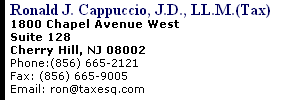|
|
When Should you Grant Credit to
Customers?
No
sale is really a sale until the money is in. And often the
receipt of that money is delayed because most businesses no
long operate on a cash and carry basis, so customers buy on
credit.
And every time your company extends credit it
takes a risk that the payments will be late
|
The Risk
Percentile |
| FICO Score® stands for 'Fair Isaac
Company Score' and is the standard credit rating, which
ranges from 300 to 900
The score was developed by the Fair
Isaac Co. and is generally the standard in North America
for benchmarking consumer risk.
The score is percentile based and
depending upon how the rest of the country fares. It's
meant to indicate the risk level a consumer might
represent and to predict the probability of future
payment performance.
Credit Score is an
indicator of the risk level that a borrower might
represent. It is a predictive score and it is used to
determine the probability of future payment performance.
A score of 765 is often considered average.
| or, worst-case,
non-existent. So the standard procedure to minimize those
risks is to take two basic precautions:
1. Run a
credit check to identify any potential problems you might
expect from a particular customer, and
2. Set
credit limits at a fair risk level based on the customer’s
FICO Score® (see right-hand
box) and that are reasonable for the customer.
But you can also assign your own company credit ratings to
your customers to help further minimize your company’s
exposure and to help manage accounts receivable. The ratings
help determine how tight or loose your company needs to
be in order to meet goals in sales, profits and debt-loss.
What you call these ratings is unimportant. The
primary issue is what they mean and how well your managers
understand them.
Here are six examples of in-house
credit ratings:
1. Quality
accounts. This top rating goes to customers with no
identifiable risk and a cash flow from primary and secondary
sources that is sufficient to service the debt. These accounts
have well-established, realistic payment plans, a long-term
relationship with your company and a history of paying all
invoices by the due date. Look for a proven financial status,
a cooperative attitude and a debt load that's reasonable in
relation to net worth.
2. Acceptable accounts.
This quality rating is given to customers that are new,
start-up businesses, or those who don’t have sufficient
secondary sources of payment. These customers have a
satisfactory cash flow to pay their bills and loans and the
payment plan is soundly structured. They show good character
and that they have lived up to all previous credit agreements.
3. Accounts to watch.
Here you start to categorize deficiencies. Reasons for giving
an account this rating include a first-time operating loss, a
sales drop, an unsatisfactory payment plan or a developing
uncooperative attitude. These customers show the potential for
further risk, although a restructuring of the debt could
eliminate the soft spot. Pay close attention to anticipate
developing credit problems.
4. Substandard accounts.
Indications that a customer merits this ranking include a poor
payment history, a weak financial condition, or a cash flow
that doesn't cover the debt. If the weaknesses continue, your
company may experience a loss.
5. Doubtful accounts.
These have the same inherent weaknesses as "substandard
accounts" but collection in full is questionable.
6. Loss accounts. These
customers are at the bottom of the barrel. That doesn't mean
the accounts have no recovery potential but full
collection is unlikely.
These are just some of the ratings you can use to help make
your accounts receivables more efficient with fewer losses. If
you would like to discuss this further, call Ronald J.
Cappuccio, J.D., LL.M.(Tax) at (856)
665-2121. |

| 





